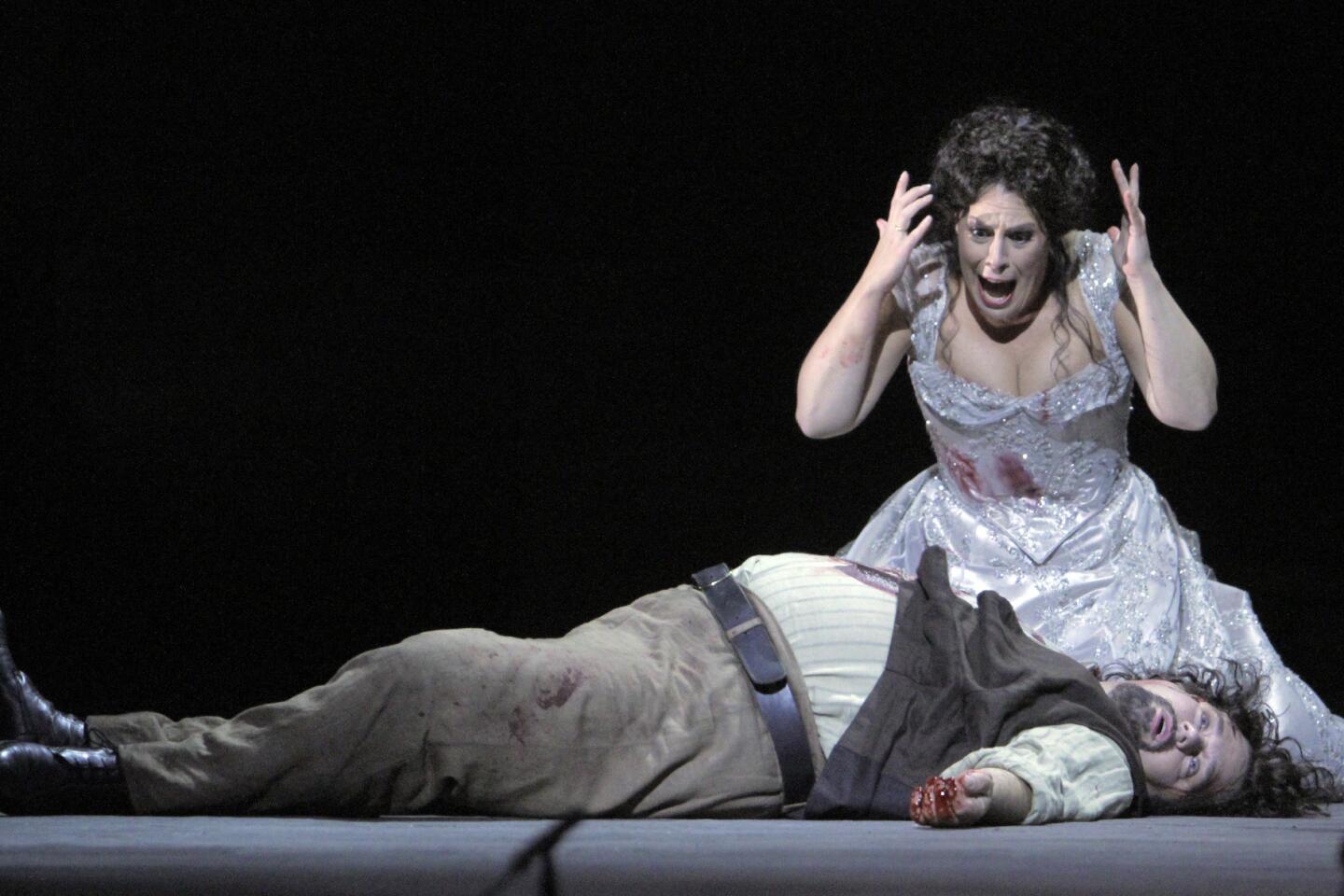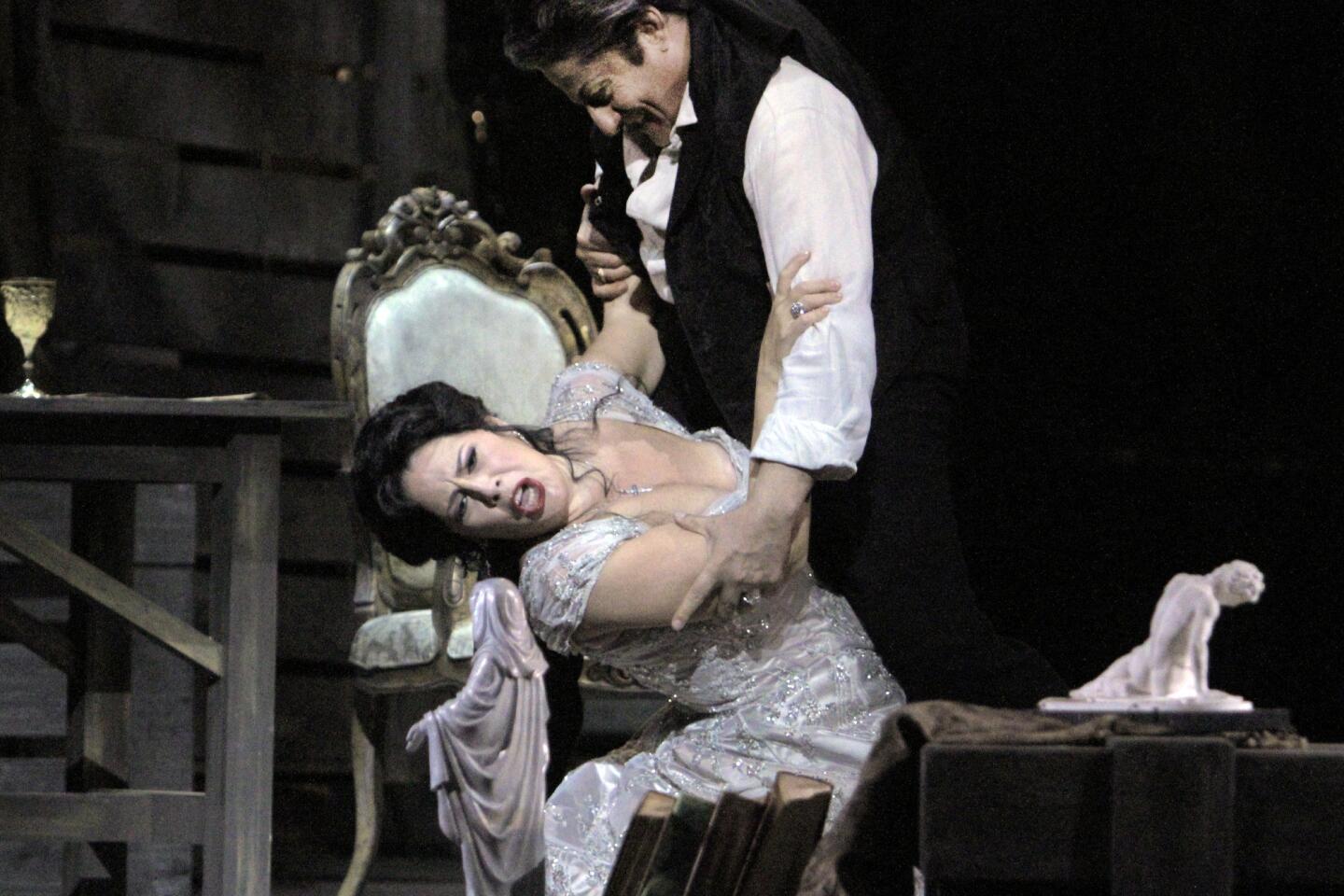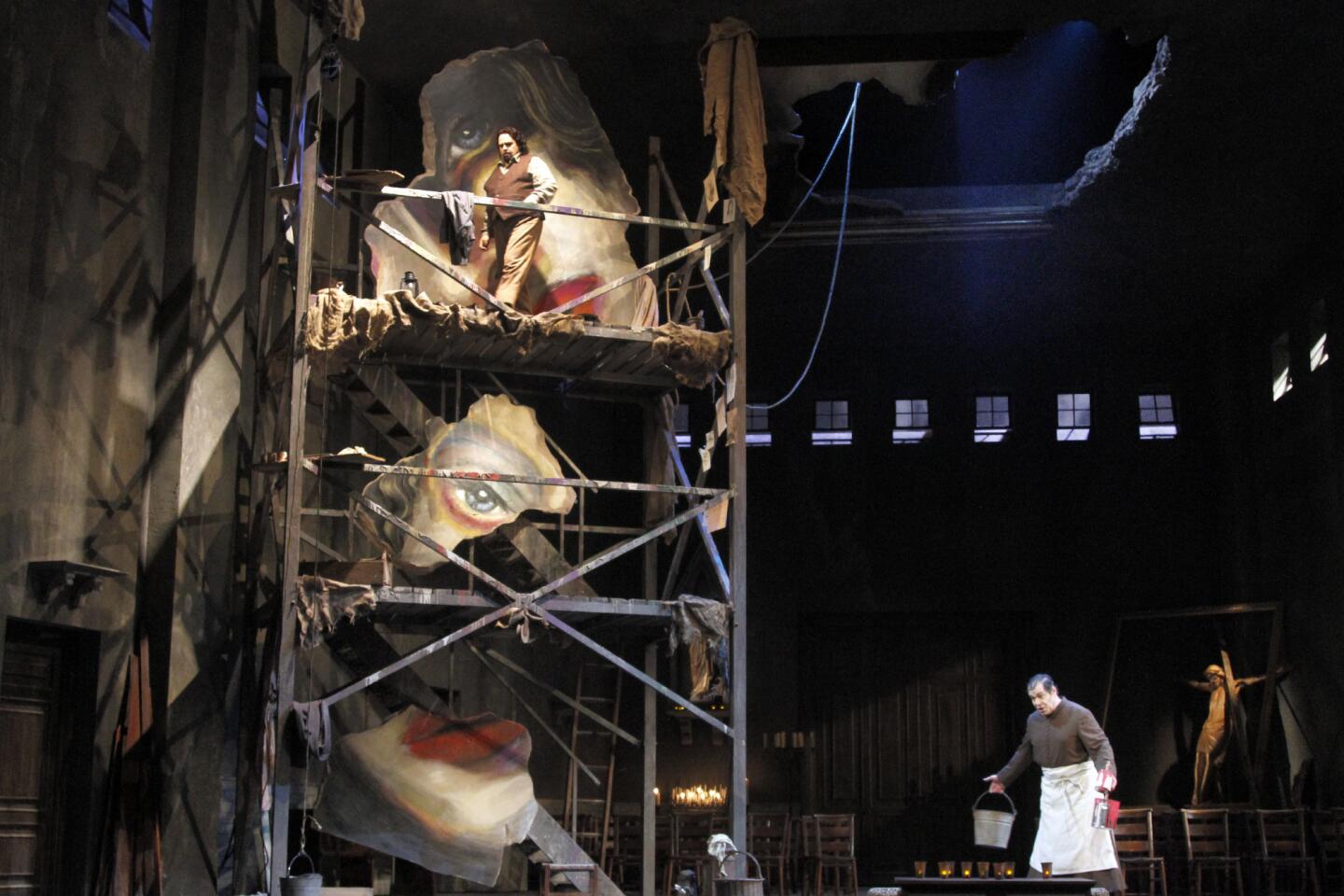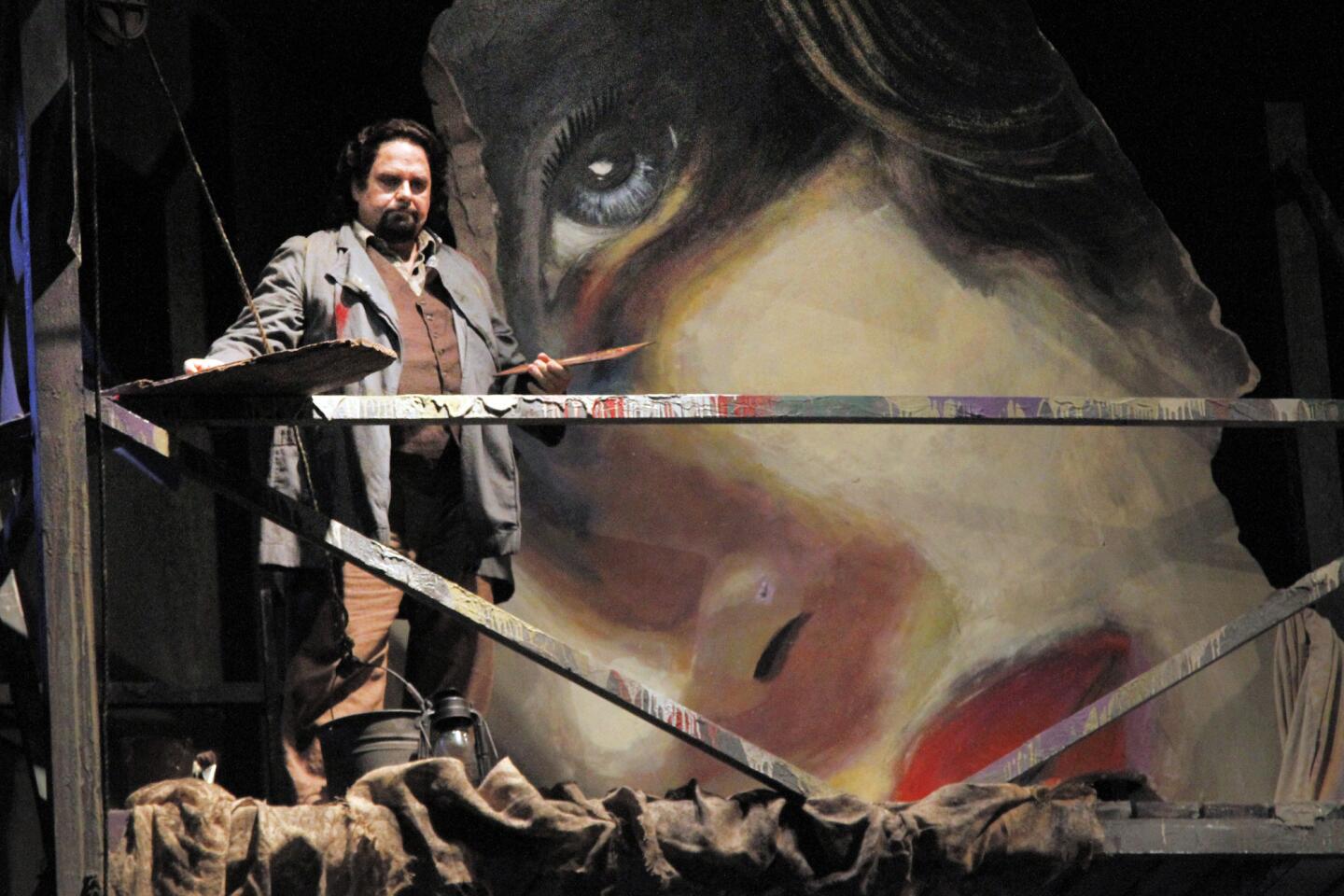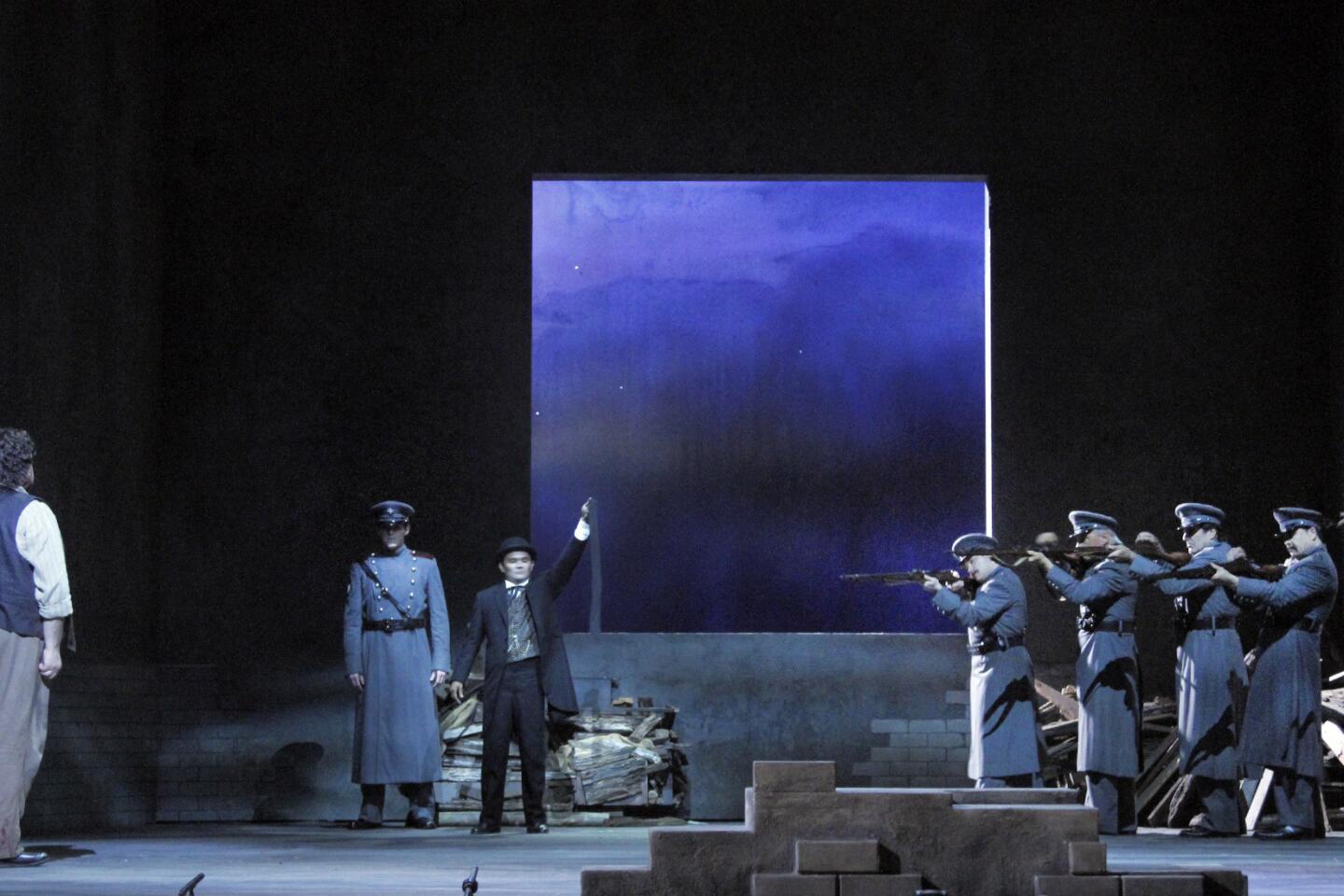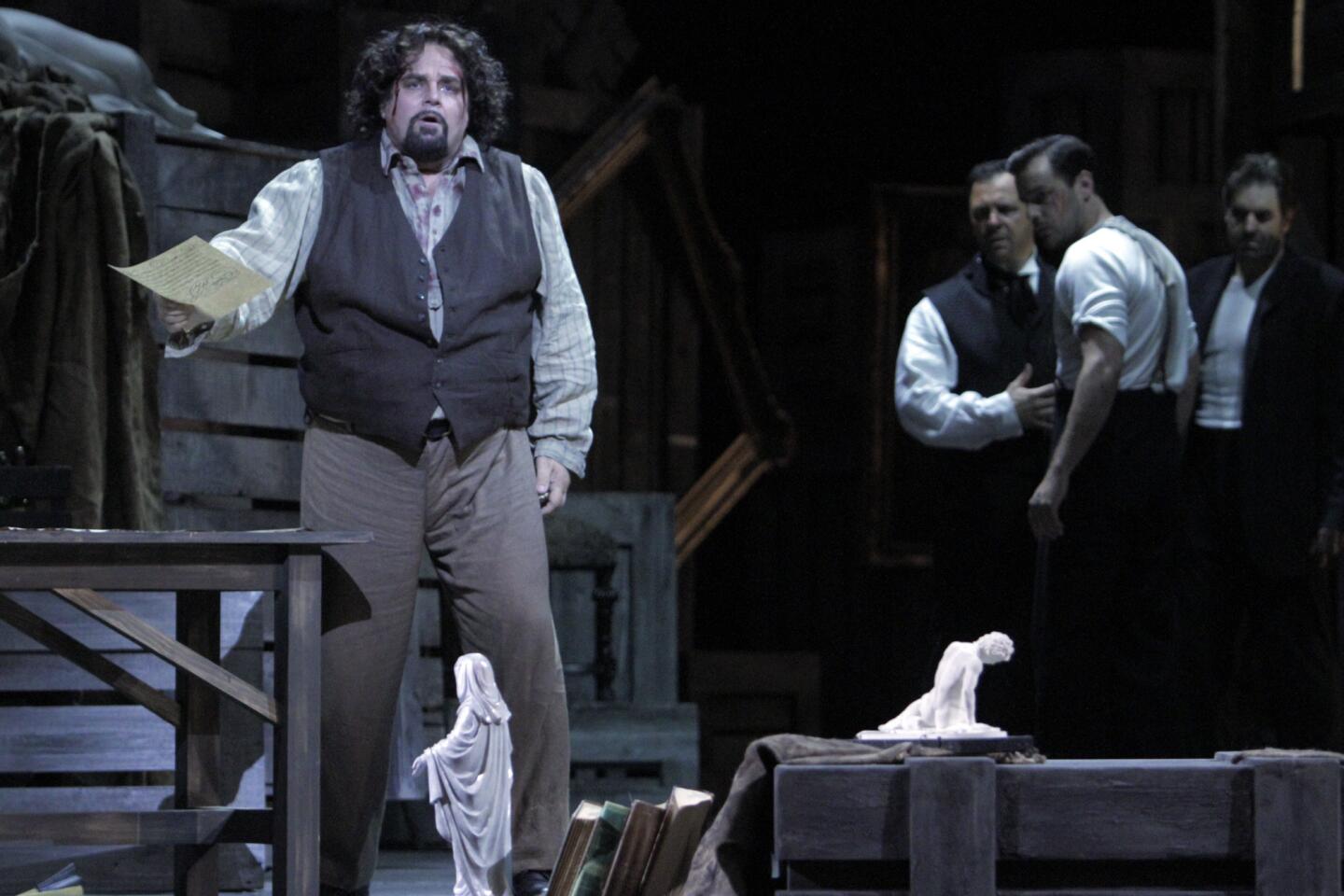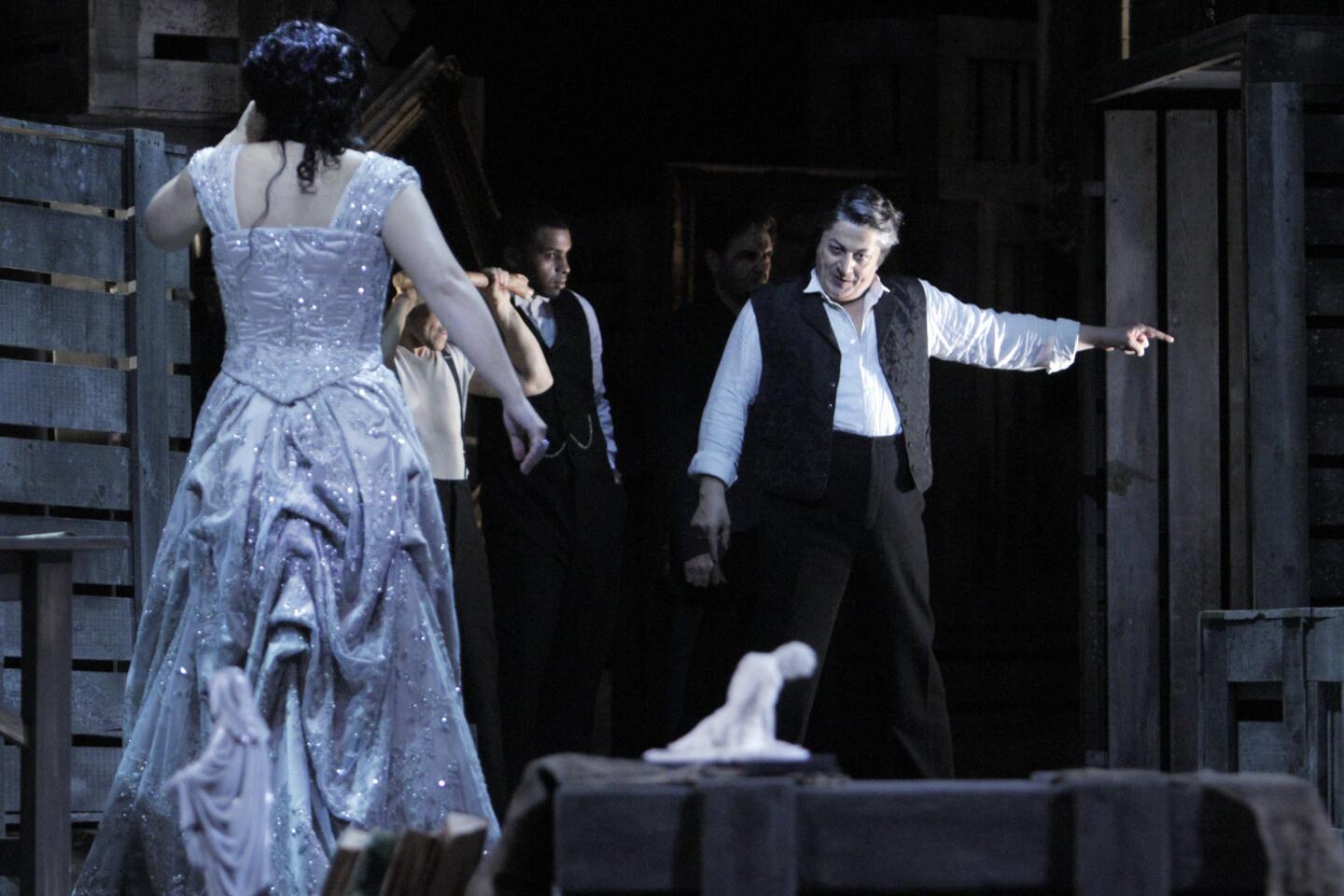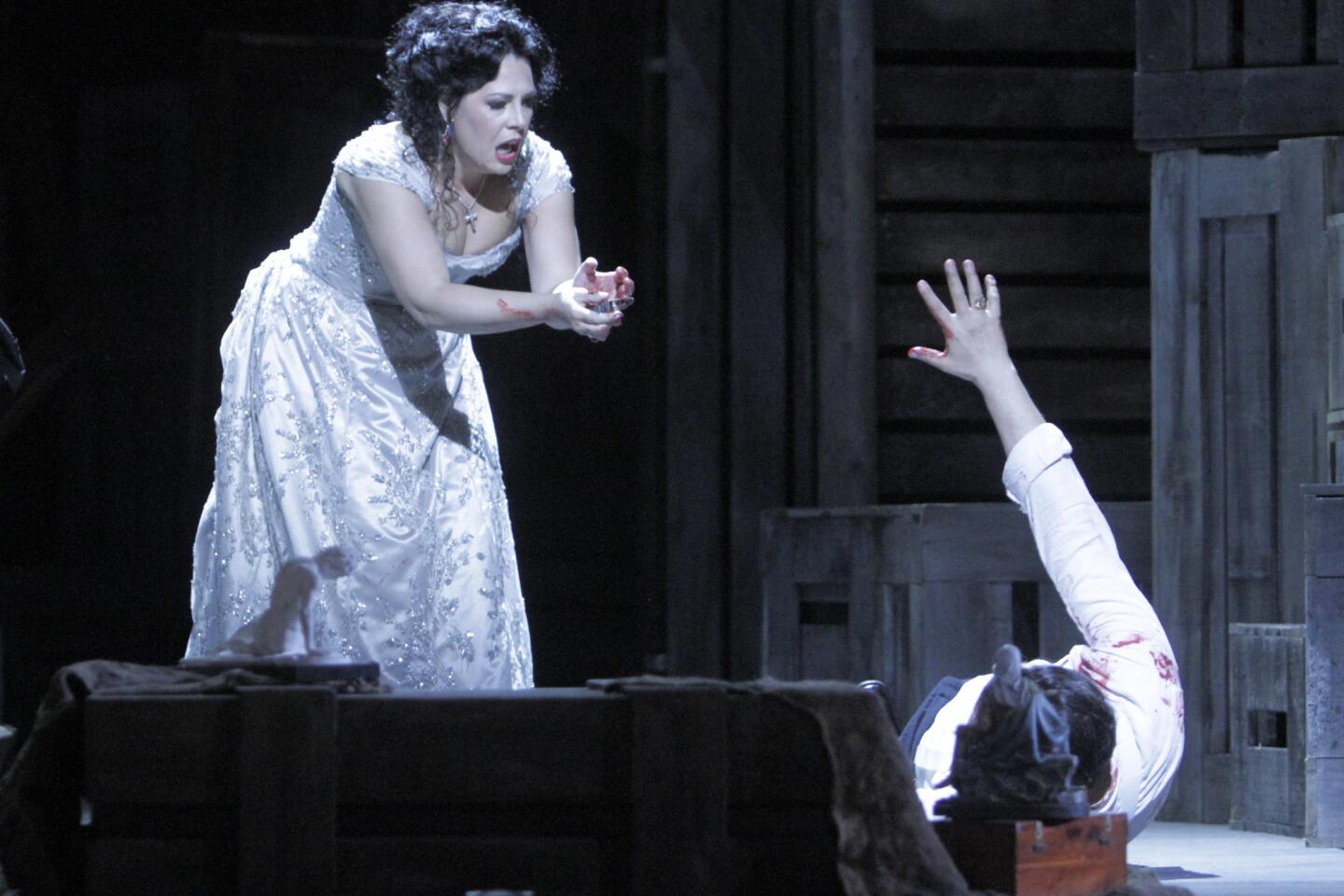Review: With ‘Tosca,’ Los Angeles Opera goes for grand
- Share via
An essay in the program for Los Angeles Opera’s new production of “Tosca,” which opened at the Dorothy Chandler Pavilion on Saturday night, begins by quoting Benjamin Britten on Puccini’s opera. The British composer, Joseph Berger writes, was “‘sickened’ by the music’s ‘cheapness and emptiness,’ and the astute critic Joseph Kerman famously called [the opera] ‘a shabby little shocker.’”
A few pages on, director John Caird starts out a note on his production by calling “Tosca” “one of the greatest works of music theater ever written.” He finds that “its importance is undiminished a century after Puccini wrote it.”
For many of us, the truth lies somewhere in the middle. A great soprano can spiff up the shock. The right conductor will know how to fill in some of the emptiness. I have yet to discover a director who can persuasively reveal “Tosca” to be one of the greatest works of music theater ever written. But as a piece of music theater, it is a step up from “Les Misérables,” for which Caird received a Tony Award when he directed it on Broadway.
PHOTOS: Los Angeles Opera’s ‘Tosca’
L.A. Opera has, in Sondra Radvanovsky, a resplendent Tosca, the diva who gives her life to art and loses it for love. The company also has a conductor with the kind of “Tosca” experience not to be found anywhere else. In his prime, Plácido Domingo was so convincing a Cavaradossi, Tosca’s lover, he probably could have kept Ben Britten from reaching for the Pepto-Bismol.
Before I say more, I will acknowledge that the Chandler was full on Saturday, and the crowd gave every indication of loving the show. A group of decked-out young people sitting near me who looked as if they would be more comfortable in a club than an opera house arrived excitedly, stopped texting the second the curtain went up (or rather, in this production, a bloody sheet was pulled down), listened intently and gave a standing ovation at the end. L.A. Opera must be doing something right.
Apparently shabby shockers sell, even when they are neither shabby nor shocking. L.A. Opera went instead for grand.
PHOTOS: Arts and culture in pictures by The Times
Although not known to be an especially assertive conductor, Domingo set the tone with a majestically measured, lushly symphonic approach. He began boldly and broadly, and he never wavered.
We have to trust that Domingo knows as well as if not better than anyone else on the planet what singers are capable of and how to bring that out. And sure enough, Radvanovsky, whose large, darkish voice grows in resonance to fill a hall the way a tam-tam does, thrived on these tempos. In her imposing aria, “Vissi d’Arte” — her artist’s creed sung just before she stabs Scarpia, the chief of police intent on raping her — a hall not known for its acoustical punch and her voice became hugely one. Every note seemed to go on forever, which was hugely effective.
Other singers didn’t rise quite so well to Domingo’s challenge. Cavaradossi’s first aria is at the beginning of the opera. Marco Berti was clearly not warmed up. As a painter, he was standing on a high scaffolding and singing for Domingo. He was understandably nervous and probably wanted to get through the ordeal as quickly as possible. I don’t think we would have noticed his hand shaking, since the movement was slight, except that Caird had him hold a sketch, which fluttered like the wing of a wounded sparrow.
PHOTOS: LA Opera through the years
Caird’s concept was an updated wartime setting. The opening scene was set in the chapel of a small, damaged church. This could have been the Second World War, although some of Bunny Christie’s costumes seemed a little earlier.
Scarpia, sung by a mildly threatening Lado Ataneli with a decently booming baritone, had the mien of a Mafioso chief. He got his throat slashed and repeatedly stabbed by Tosca in a warehouse full of plundered ancient art, the kind the Getty might have had its eyes on.
Cavaradossi’s execution was in a prison that resembled a concentration camp. Christie designed the sets as well, and they had the excellent advantage of many reflective surfaces that helped projecting.
But Caird could just as well set his production anywhere, in any era or circumstance, what with principles schooled in old-school opera acting. When Caird tried a little more, it didn’t work. Radvanovsky, for instance, is not the playful type and she seemed awkward teasing Cavaradossi.
Other touches were peculiar. I didn’t get the point of what looked like square dancing in a European church, but it wasn’t bothersome either. Philip Cokorinos and Joshua Bloom did, though, manage the smaller parts of the Sacristan and Angelotti, a political prisoner on the run, quite effectively, but they’re only in the first act.
Go to soak up big voices, and leave it at that.
--------------------------------------------------------
‘Tosca’
Where: Dorothy Chandler Pavilion, downtown Los Angeles
When: 2 p.m. Sunday and June 2, 7:30 p.m. May 30, June 5 and 8, 7:30 p.m.
Tickets: $18 to $337
Information: (213) 972-8001 or https://www.laopera.com
Running time: 2 hours, 50 minutes
More to Read
The biggest entertainment stories
Get our big stories about Hollywood, film, television, music, arts, culture and more right in your inbox as soon as they publish.
You may occasionally receive promotional content from the Los Angeles Times.
